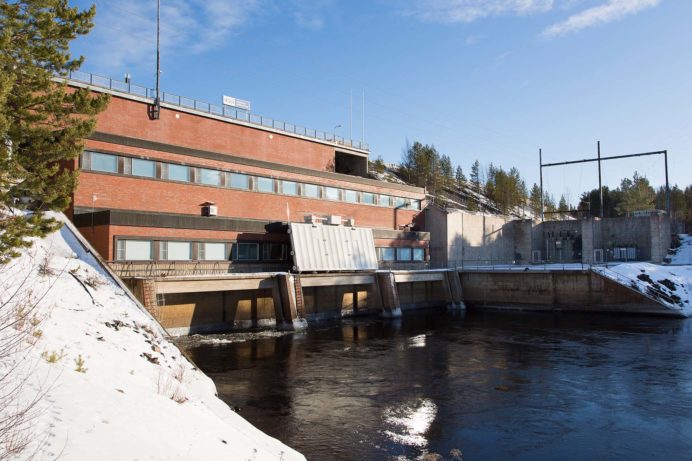
Balancing power is vital to the balance of the electrical power system, and PVO-Vesivoima has implemented new process control and optimisation software to enhance its generation along the Iijoki river. The system was supplied by Honeywell. The goal is to optimise the production process. In addition, the environment benefits from the automated regulation system as it allows more precise control of environmental factors such as reservoir water levels.
In conventional hydropower plant operation, production is controlled by plant operators through the energy management system and production plans. PVO-Vesivoima’s plants along the Iijoki have implemented a new, automated river regulation system. The system is still guided by the production plans, but automation manages the river as one entity instead of separate production units.
“You could say we’ve taken a huge leap from a manual approach to a fully automated and optimised system. APC is controlling all the eleven production units and the twelve regulating dam floodgates located along the Iijoki. A specific power level is calculated for each of them based on the demand and economic activity. This brings significant benefits when scaled up to the total power production on the river,” says automation specialist Tommi Hansen-Haug from PVO-Vesivoima.
World-leading technology
The regulation is based on an APC (Advanced Process Control) system supplied by Honeywell. The company’s Senior Account Manager Timo Koivunen explains that it is quite exceptional in Finnish conditions.
“There is no other example of a similar system being implemented on such a large scale in Finland. PVO-Vesivoima now possesses the most advanced river regulation system that involves the largest number of plant units in the country, featuring world-leading technology,” he explains.
The river regulation system monitors the situation in real time, and controls the turbine and spillway equipment. It also takes into account the status of the power grid and the need for reserves.
“I see river regulation as a very positive forward-looking effort. Pohjolan Voima and UPM are trailblazers in implementing these technologies,” says Timo Koivunen.
Even more attention on environmental aspects
Development Manager Juha Haromo from UPM Energy also sees the benefits as remarkable. PVO-Vesivoima’s control room is managed by UPM Energy, and UPM is also involved in the development of the PVO-Vesivoima systems.
“In practice, the river regulation system enables a shift from active operation to the monitoring of operations. At the same time, real-time optimisation allows the plans to be implemented with greater precision and efficiency,” Haromo says.
The regulation system is also significant from an environmental perspective. The automation guarantees more precise control of the reservoir water levels along the span of the river system.
The river regulation system also contributes to the green change and combatting climate change. The need for balancing power increases as the renewable and weather-dependent production grows. In addition, more rapid balancing is needed with the transformation of the energy system and the move towards a more real-time electricity market.
River regulation in practice
- The system controls and coordinates the operation of the connected turbine and spillway equipment. The objectives are to perform regulation tasks at the correct time and maximise the production efficiency. The software enables more effective management of the issues caused to the plants by ice and grill blocking.
- The software and production plan are used to control the water and energy balance, i.e. the amount of energy that can be generated in real time. The control solution predicts the process more than 24 hours into the future.
- The river regulation system takes process unit failures into account and minimises the value of production loss.
Additional information:
Tommi Hansen-Haug, automation specialist, PVO-Vesivoima Oy, tommi.hansen-haug@pvo.fi, tel. +358 50 3038 629